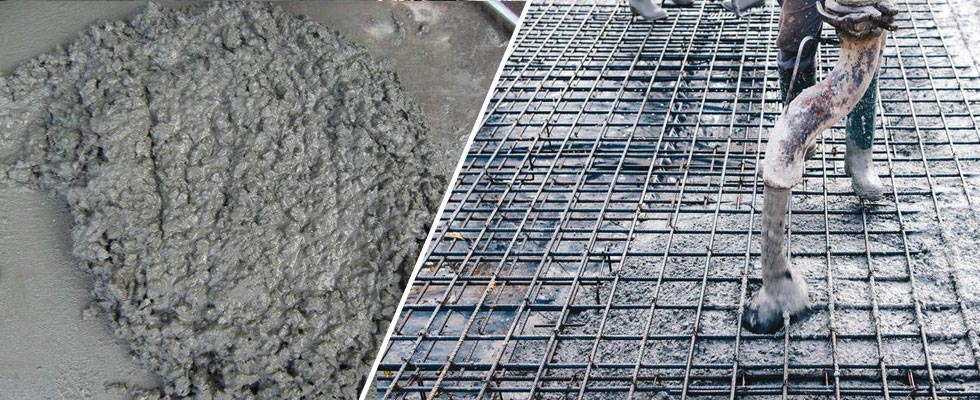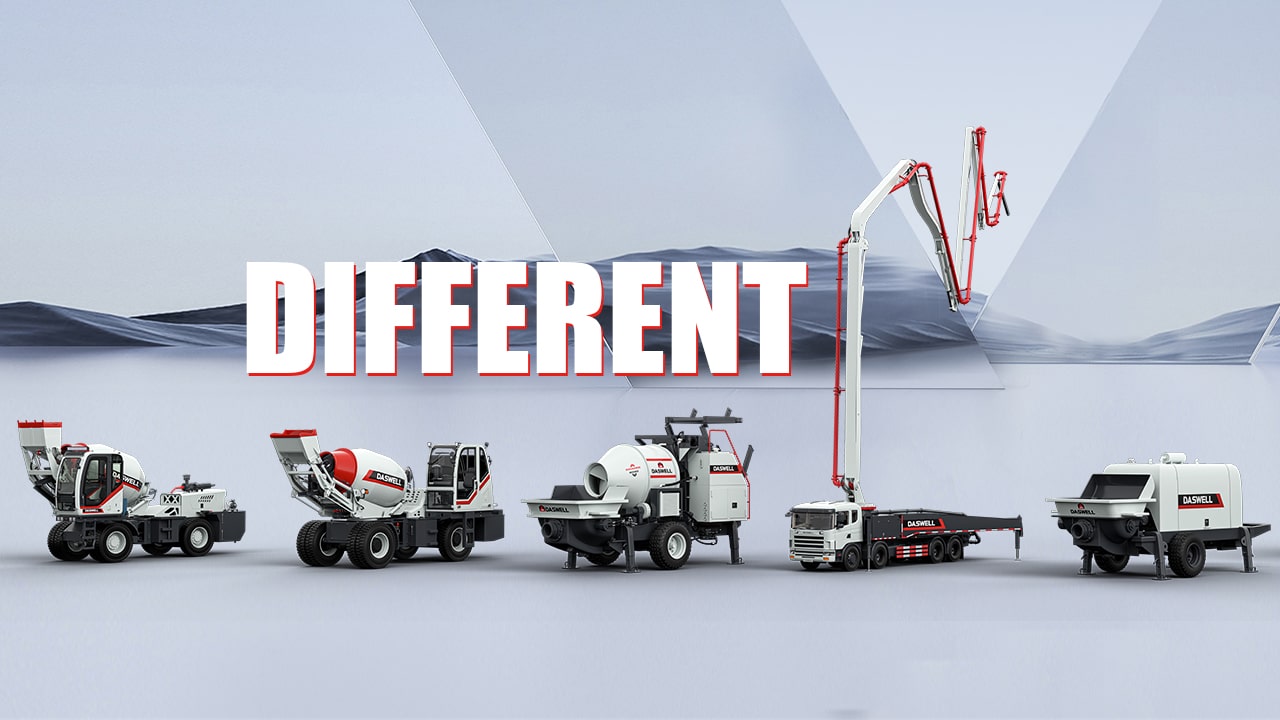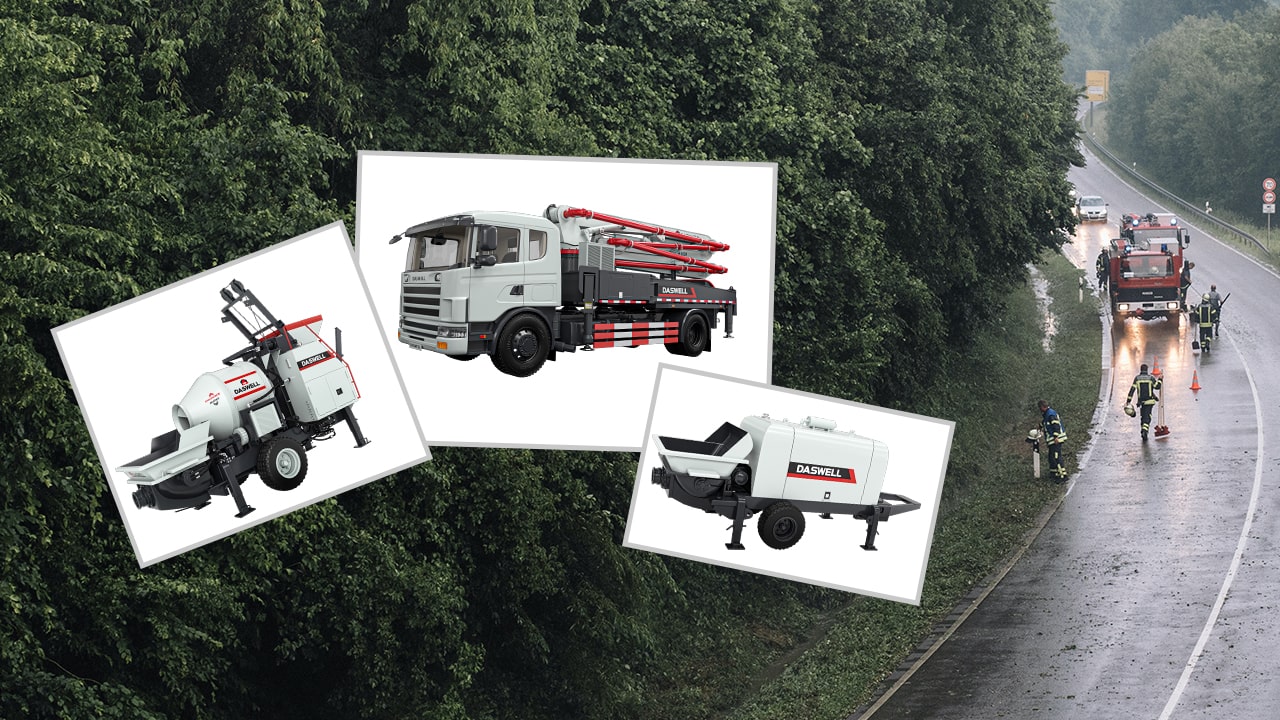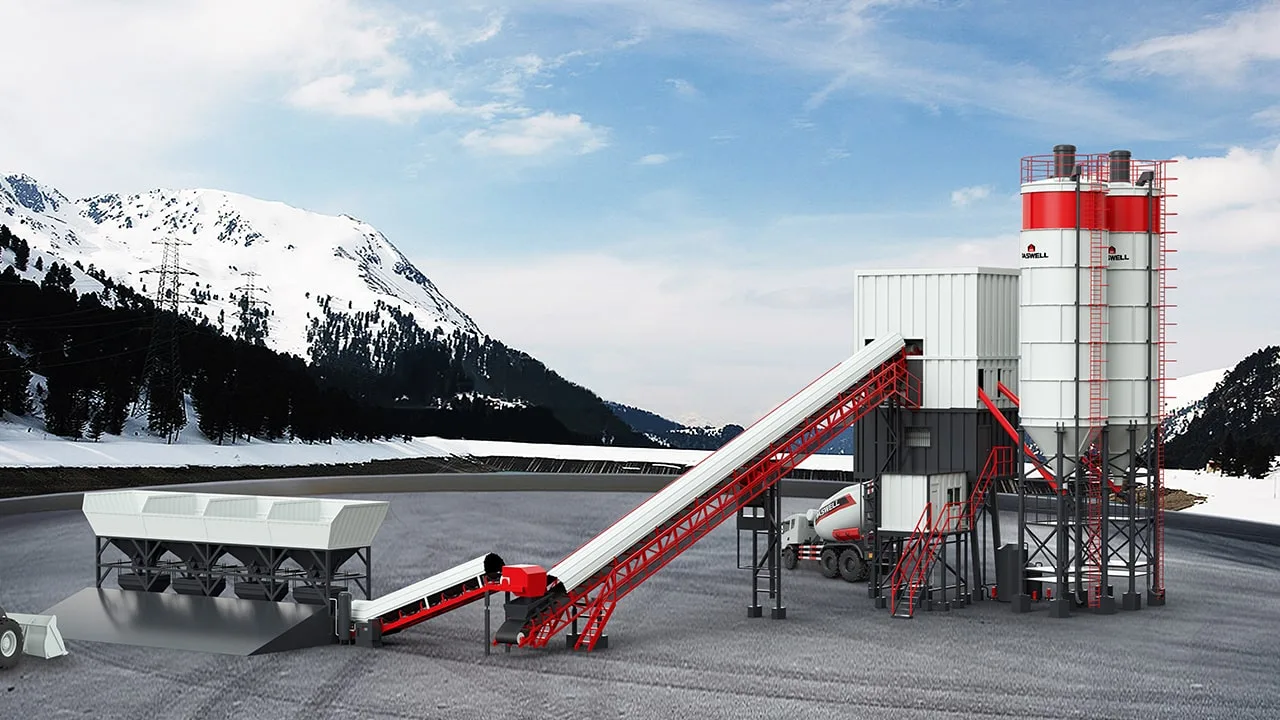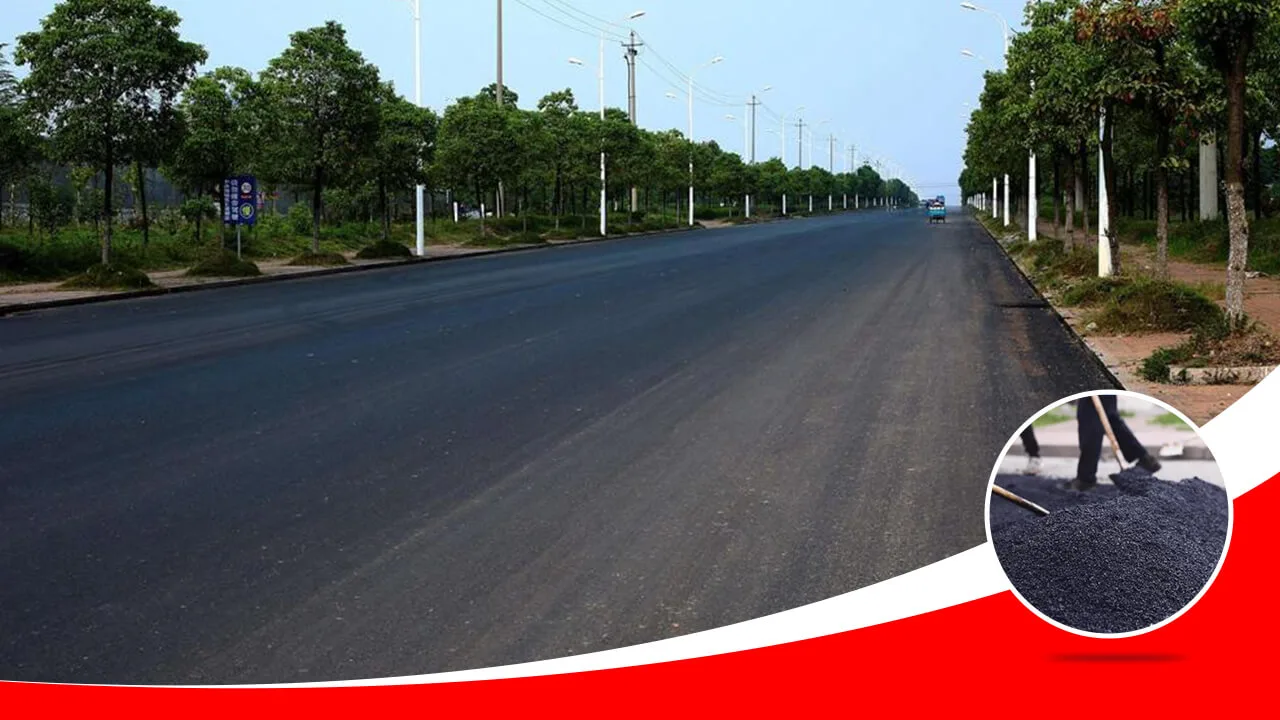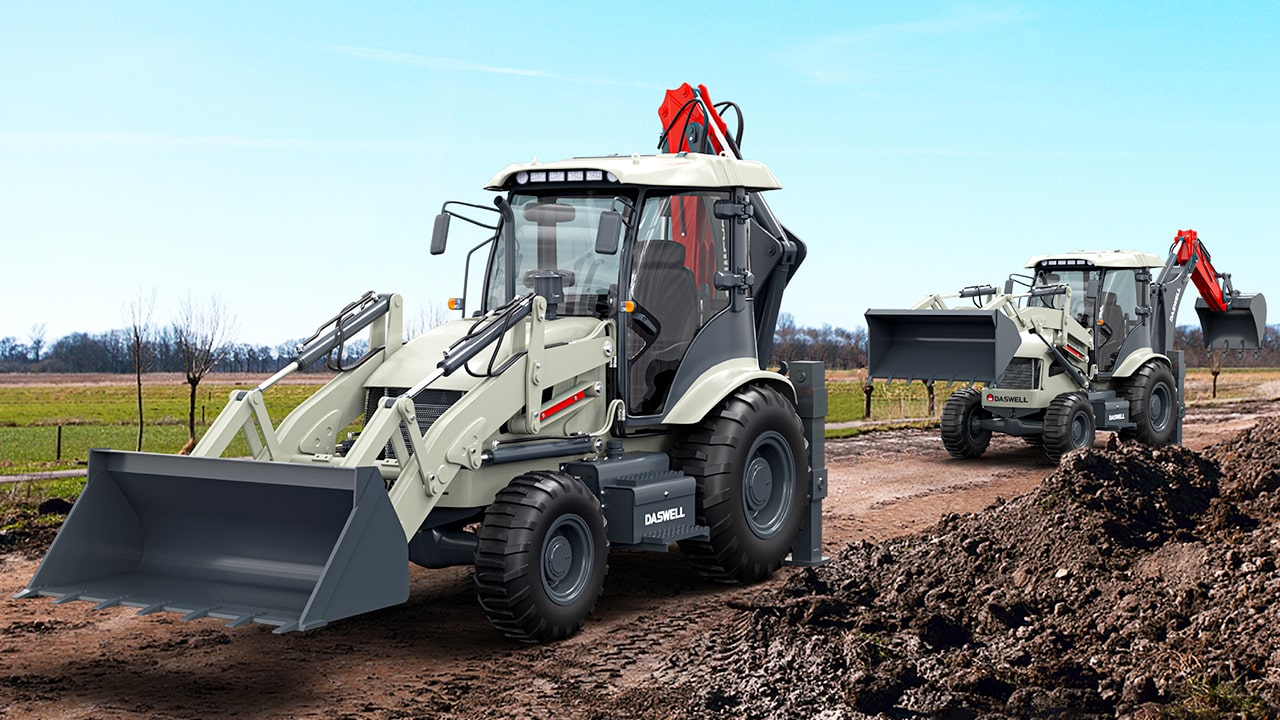How Does a Concrete Pump Work
What is a concrete pump?
A concrete pump is a type of construction equipment used to transport fresh concrete from a ready-mix concrete truck to the site where it is needed, usually in a remote, high, or difficult-to-access location.
The working principle of a concrete pump is to use a hydraulic system to press concrete into a pipe or hose. Pressing concrete into a pipe through a hydraulic system greatly saves manpower and improves production efficiency. It can also transport concrete over long distances more easily.
Concrete pumps are the most commonly used products in modern construction machinery and equipment.

There are three main types of concrete pumps:
Concrete mixing pumps, a new type of product, suitable for small and medium-sized projects, combine concrete mixing and concrete pumping in one, which can achieve both mixing and pumping, which is very economical.
Trailer concrete pumps (also known as pipeline pumps): suitable for small and medium-sized projects, providing flexible horizontal and vertical delivery methods. A popular choice for projects that only require flexible pumping.
Boom pumps: equipped with hydraulic arms (booms), can accurately cross obstacles or reach higher heights, and are suitable for large commercial projects.

Why Concrete Pumps Are Essential to Modern Construction
Concrete pumps have become an essential component of modern construction because they significantly increase productivity on construction sites, reduce labor intensity, and ensure more consistent, higher-quality concrete pours:
Increase efficiency: Concrete can be delivered continuously and accurately, reducing delays and speeding up the pouring process.
Reduce manpower: Reduce the number of workers required to pour concrete, thereby reducing labor costs and minimizing errors caused by fatigue.
Enhance quality control: Pumping helps reduce segregation and keeps the concrete mix uniform from mixing to final pour.
Adapt to complex sites: Concrete pumps can reach elevated areas, congested urban areas, and difficult-to-access sites.

Types of projects for concrete pumping
Concrete pumps are suitable for a variety of construction applications, especially when precision, speed, or distance are critical factors. Some common project types include:
High-rise buildings: Boom pumps are ideal for quickly and safely delivering concrete to high floors.
Bridge and infrastructure projects: Long-distance concrete pumping ensures seamless concrete flow in piers, abutments, and bridge decks.
Tunnels and underground projects: Concrete pumps are ideal for narrow or low-headroom environments where other methods are not suitable.
Residential and foundations: Trailer pumps provide flexibility in placing concrete around rebar and complex structures.
Road and pavement construction: Continuous, controlled placement with concrete pumps ensures a smoother finish and reduces construction time.
Precast concrete sites: Efficiently deliver concrete to molds without cranes or lifting equipment.
Remote or hard-to-reach areas: Concrete mixing and pumping eliminate the need for excessive formwork or temporary transport equipment.

Basic components of a concrete pump
To achieve precise, continuous concrete delivery, a concrete pump system consists of several key components:
Pump group: A central unit driven by an engine that uses hydraulic or mechanical energy to drive the concrete through the system.
Hopper: A funnel-shaped container that receives concrete from the mixer and feeds it into the pump. Hoppers are often equipped with agitators to prevent segregation.
Valve system: Directs the flow of concrete from the hopper into the delivery line. Common types include S-valves, rock valves, and ball valves.
Pipeline (delivery line): A system of steel or rubber pipes and hoses used to transport concrete to the pouring site, whether the distance is 20 meters or 600 meters.
Main types of concrete pumps
Modern concrete pumping technology encompasses several types of equipment designed to meet different project needs. Each type offers unique advantages depending on the size of the site, accessibility, and concrete delivery requirements.

Concrete Mixer Pump
Mixer and Pumper 2-in-1
Concrete mixer pumps combine mixing and pumping functions in one unit. Ideal for sites that lack standalone mixing equipment, it combines on-site concrete preparation with efficient pouring. This all-in-one solution significantly reduces labor and equipment costs.

Concrete trailer pumps
Most used pumps
Trailer concrete pumps that remain in a fixed position during operation. It pumps concrete to the target pouring location via flexible hoses or rigid pipes. This type of pump is suitable for horizontal and vertical transportation over long distances.

Boom pumps
Pump-mounted pumps with robotic arm positioning or tilt
Boom pumps are mounted on trucks and equipped with robotic arms for precise control to pour concrete at height or over obstacles. They are the first choice for large or high-rise construction projects.
Fresh concrete is poured into the hopper, which acts as a container and initial storage area.
A stirring mechanism (agitator) inside the hopper keeps the concrete flowing, preventing segregation and ensuring a continuous flow of concrete to the pump inlet.
Twin hydraulic cylinders drive pistons, drawing concrete from the hopper and pushing it into the pumping cylinders, creating the pressure required for delivery.
A valve mechanism (such as an S-valve or rock valve) alternates flow between the cylinders, ensuring a continuous flow of concrete by directing the pressurized concrete from each stroke to the same pipe.
Finally, the concrete is pushed into connected pipes or hoses and discharged precisely to the target pouring location – whether it is at ground level, underground or several stories high.
Pumping mechanism and key components:
Hydraulic system: drives the piston to reciprocate with high strength and precision, thereby pressing concrete into the valve.
S valve or Rock valve: A heavy-duty valve that alternately connects each pump cylinder and the discharge pipe to minimize wear and ensure smooth transition.
Continuous flow design: Dual cylinder operation allows uninterrupted discharge, providing stable and efficient concrete even in demanding applications such as high-rise buildings or long-distance pumping.
Advantages of Using a Concrete Pump
Increased efficiency and speed
Concrete pumps deliver a steady flow of concrete, significantly reducing project duration compared to manual or crane pouring methods.
Precision pouring
The pumping system ensures that concrete is poured exactly where it is needed, whether it is a floor slab, column, beam or high-rise building, minimizing waste and improving structural integrity.
Reduced labor and costs
The use of concrete pumps reduces the need for trolley transportation or manual handling. Fewer workers are required, which reduces labor costs and improves safety on the construction site.

Reaching hard-to-reach areas
Whether it is narrow spaces, elevated sections, or underground structures, concrete pumps can reach other hard-to-reach areas through flexible hoses or boom extensions.
Consistent concrete quality
A steady and uninterrupted flow of concrete ensures uniform curing and minimizes the risk of segregation or cold joints, resulting in stronger and more durable concrete structures.
Ideal for Large or Remote Projects
From remote construction sites to large-volume pours, concrete pumps are essential to completing large or logistically challenging projects on time.
Use Cases in Real Construction
High-rise building construction

Concrete pumps are essential for skyscrapers and multi-story buildings. Boom pumps can deliver concrete to great heights, eliminating the need for slower and less efficient crane and bucket systems.

Tunnel and bridge projects
For infrastructure projects such as tunnels and bridges, concrete pumps deliver concrete over long distances in tight spaces, ensuring safety and structural consistency.
Residential developments
In residential projects, especially in suburban or rural areas, trailer-mounted concrete pumps simplify the pouring of slabs, driveways, and foundations, even in hard-to-access areas.

Foundations and basements

Pumps provide the necessary precision and control for pouring deep or narrow foundation structures. This ensures even distribution of concrete and reduces the risk of errors in tight spaces.

Remote and complex terrain
For sites with uneven terrain or difficult access, such as hillsides, forested areas, or island projects, concrete pumps eliminate the need to build access roads or rely on manual transportation.
Precast and Infrastructure Plants
Concrete pumps are widely used for mold filling in precast plants and infrastructure facilities, ensuring quick and accurate pouring of concrete with minimal labor input.

Why Concrete Pumps Are Essential in Modern Construction
Concrete pumps have revolutionized the way concrete is delivered and placed on construction sites. With its unmatched speed, precision, and flexibility, concrete pumping technology reduces labor requirements, minimizes construction schedules, and ensures consistent quality even in the most complex or remote locations.
Whether you’re constructing a high-rise building, a bridge, or a small residential construction, concrete pumps offer a reliable solution that increases efficiency and reduces overall costs. With advanced designs that combine mixing and pumping functions in one, such as concrete mixer pumps, contractors can now achieve greater productivity and space efficiency.
With the ever-increasing demands of modern construction, investing in the right concrete pumping equipment is no longer a nice-to-have option—it’s essential to staying competitive and delivering construction project results on time and on budget.
Concrete Mixer with Pump
From Traditional Concrete Pumps to Integrated Mixer Pumps – A Smarter Upgrade for Construction Sites

For years, traditional concrete pumps have been the go-to solution for conveying ready-mixed concrete over long distances, offering high pressure, stable performance, and reliable operation. Whether it’s a trailer-mounted pump or a boom pump, these machines have served countless construction sites across urban and rural settings.
However, in real-world jobs, many users found themselves still needing a separate concrete mixer on site to prepare the concrete before pumping. This not only increased equipment and labor costs, but also made logistics more complex.
To address this challenge, Daswell introduced a new-generation product — the Concrete Mixer Pump, also known as the Mixer with Pump or Concrete Mixer with Pump Trailer. This compact, all-in-one solution combines concrete mixing and pumping in one machine. It simplifies the process, reduces labor, and increases mobility on-site.
In fact, most customers initially contact us when they are looking for a concrete pump. But after visiting our warehouse and seeing the mixer pump in action, they quickly realized the benefits of this upgraded model. The main reason? The mixer pump delivers everything they need with just one machine.
While the term “concrete pump” still enjoys higher brand awareness and online search volume, more and more contractors are switching to the mixer pump once they see the efficiency and cost savings it brings.


